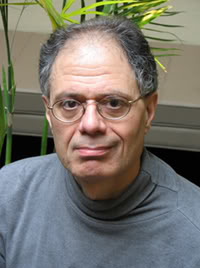Most of us consume too much information and exercise too little imagination. Readers looking for a brisk imaginative workout will want to consider these two books: erudite and beautifully written accounts of how our human forebears, as far back as we have any evidence, imagined themselves in relation to one another, to the rest of this world, and to the next world. Cognitively, each evokes a salutary strangeness. As one of the authors notes, “the present becomes almost transparently thin as we reflect back through deep time.” Reflecting deeply and distantly is good exercise for the imagination.
Felipe Fernandez-Armesto is an Oxford historian who delights in writing books with dizzyingly ambitious-sounding titles: “Civilizations,” “Millennium,” “Reformation,” “Truth,” “A History of Food.” His newest, “Humankind,” is not, of course, a history of everything humans have ever done but a survey of how we have defined human nature and discriminated between our kind and not-our-kind. The common-sense criteria of human uniqueness – language use, tool-making, art, ritual, social organization – won’t do, he claims. Primatologists and other biologists keep finding examples of these capacities among non-humans. They’re only rudimentary capacities, of course; one shouldn’t exaggerate the similarities. But the greater danger is to lose sight of the essential continuities between humans and other animals.
That is a comparatively recent temptation: as Fernandez-Armesto shows, “the claim that humankind as a whole inherited the supremacy of nature cannot be traced back very far.” Even after the human “soul” was invented (about 1000 B.C., in the Upanishads), folk wisdom treated animals as peers. In medieval France and Wales, for example, Christians venerated saintly dogs; in 17th-century Spain rats, birds, and grasshoppers were put on trial and excommunicated. In werewolves, demigods, shamans, and totems, and perhaps also in the modern animal-rights movement, the human imagination seems incorrigibly drawn to cross, or even deny, what Fernandez-Armesto calls “the animal frontier.”
The greatest spur to human self-definition was the discovery of other races. The Age of Exploration brought 15th- and 16th-century Europeans into contact with remote peoples who looked and behaved much differently. The result was a proliferation of theories, some based in biology and some in culture. Pigmentation, hair type, and skull shape were obvious bases of comparison. On the cultural side, theorists asked whether the newly discovered creatures obeyed “natural law” as Christians understood it or met Aristotle’s definition of human nature as “political” and “rational.” Not all this theoretical attention was condescending: Rousseau, Diderot, and other Enlightenment exponents of the “noble savage” saw that many “civilized” forms of religion, commerce, and war had made Europeans less rather than more human.
It is poignant to watch our ancestors grappling with large questions about human nature before Darwin, who settled so many of them. No doubt our philosophical efforts will look equally brave and hapless to our descendants, once the possibilities and limits of genetic and robotic technologies have become clear. “We seem doomed,” Fernandez-Armesto writes, “to self-transformation into something unrecognizable as human by present standards.” Whether this is a doom or a blessing can only be wisely decided by those who have immersed themselves deeply and imaginatively in the human past.
“The Buried Soul,” by British archaeologist Timothy Taylor, is an extraordinary immersion experience. I had always supposed that archaeology was as dry as the dust and bones it traffics in, as pedestrian as the catalogues it compiles. On the contrary, when expounded by a masterly storyteller like Taylor, it resembles psychoanalysis at its best. In both, starting from odd, random bits of evidence, combined with intensive study of their immediate context, a wide knowledge of other case studies, an ample stock of humane learning, and a knack for inspired guessing, the investigator gradually arrives at an interpretation that brings long-hidden beliefs and practices, and with them whole unsuspected strata of human nature, to light.
I haven’t space to illustrate how ingeniously Taylor assembles his interpretations, patiently working out the barely intelligible motives and beliefs of the creatures who became us. But I can at least mention a few of his conclusions and invite you to let your imagination play over them. Perhaps the most difficult to digest is that until comparatively recently in our long evolutionary history, humans have frequently eaten corpses rather than burned or buried them. Another is that the existence of groups has often seemed more real – literally, not metaphorically – to their members than the existence of individuals. Another is that the social nonexistence of women and slaves, who were often not buried except with their husbands or masters, seems a fairly recent (ie, a civilized) phenomenon.
To keep us from hasty judgments, Taylor quotes Herodotus:
King Darius of Persia called together some of the Greeks at his court and asked what they would take to eat their dead fathers. They said that no price in the world would make them do so. Then he sent for some Callatians from India, who do eat their parents, and asked them what price would make them burn their dead fathers with fire. They shouted aloud: “Don’t speak of such horrors!” … I think the poet Pindar was right: “Custom is king of all.”
Wherever else you travel this summer, you should consider a trip into “deep time” with “The Buried Soul.”
[END]
